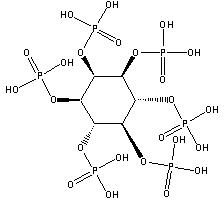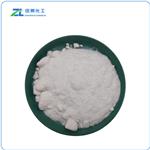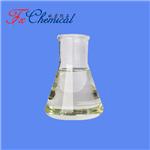Phytic acid (PA, molecular formula: C6H18O24P6, molecular structure is as follows ), also known as inositol hexakisphosphate, hexaphosphoinositol, myo-inositol hexakisphosphate, IP6, is pale yellow to pale brown slurry liquid, soluble in water, ethanol and acetone, nearly insoluble in ether, benzene and chloroform. It is stable and incompatible with strong oxidizing agents
[1][2][3]. It’s basically non-toxic and should be sealed in a cool and dry place. Storage and transportation can be according to general chemical regulations.

PA first identified in 1855
[4] is a naturally occurring compound formed during the maturation of seeds and cereal grains. It’s the storage form of phosphorus, an important mineral used in the production of energy as well as the formation of structural elements like cell membranes
[5]. In the seeds of legumes, it accounts for about 70% of the phosphate content and is structurally integrated with the protein bodies as phytin, a mixed potassium, magnesium, and calcium salt of inositol
[6].
PA is the most abundant form of phosphorus in plants. During food processing and digestion, inositol hexaphosphate can be partially dephosphorylated to produce degradation products, such as penta-, tetra-, and triphosphate, by the action of endogenous phytases, which are found in most PA-containing seeds from higher plants. Seed germination results in increased phytase activity, and PA hydrolysis releases phosphate and free myoinositol for use during plant development
[6].
PA has the ability to bind minerals, proteins, and starch (either indirectly or directly). This binding alters the solubility, functionality, digestion, and absorption of these food components. At normal pH range, the phosphate groups of phytic acid are negatively charged, allowing interaction with positively charged components such as minerals and proteins. Metal ions may bind with one or more phosphate groups forming complexes of varying solubility. Proteins are able to bind directly with PA through electrostatic charges. Starch binding may also occur via hydrogen bond formation. Zinc appears to be the most affected by PA because it forms the most stable and insoluble complex. Other minerals and nutrients that are affected include calcium(Ca), sodium (Na), iron (Fe), magnesium (Mg), manganese (Mn), and chlorine (Cl)
[4].




